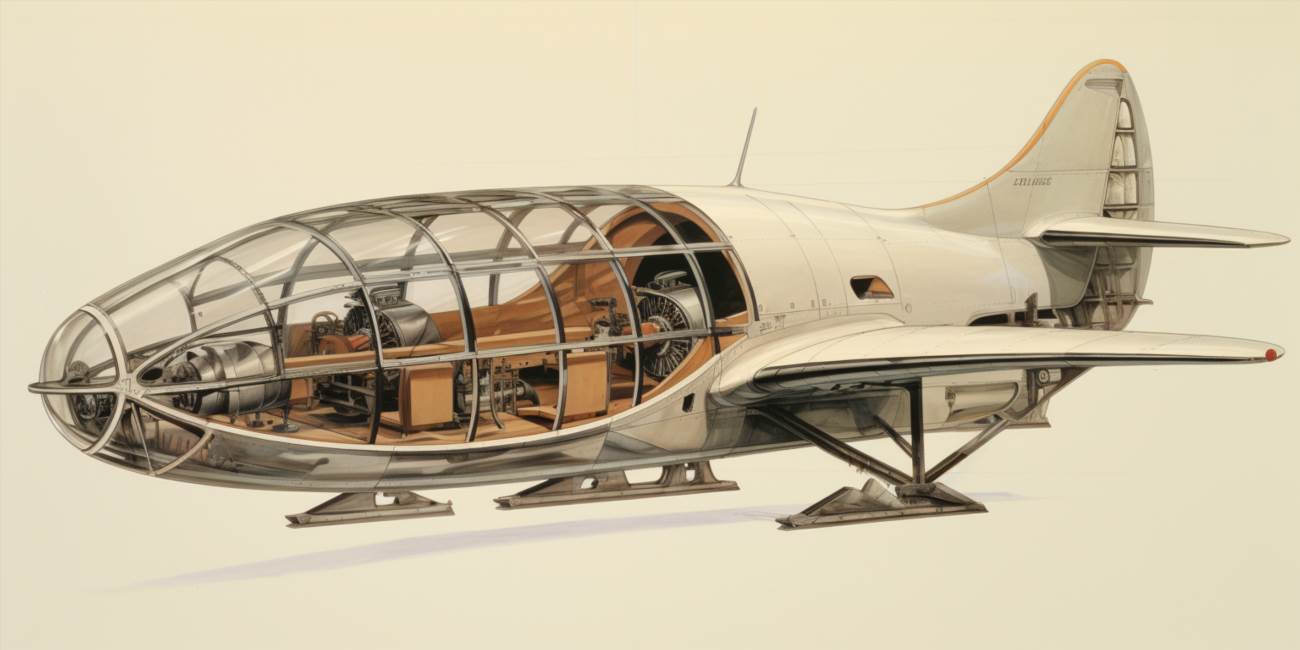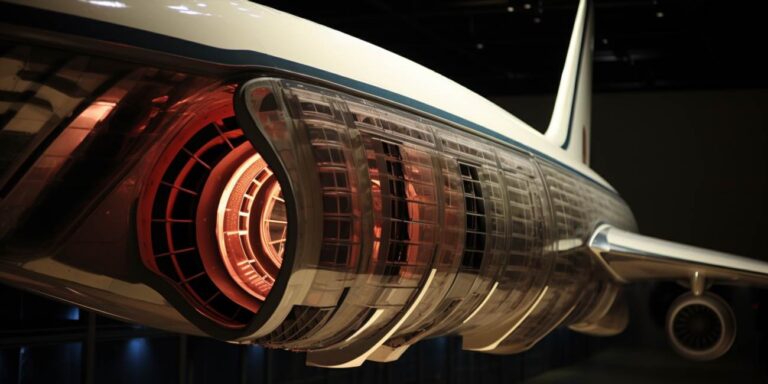At its core, the elevator is a movable control surface located on the horizontal stabilizer of the aircraft’s tail. Its primary function is to control the pitch of the aircraft, which refers to the rotation of the aircraft’s nose up or down. This is achieved by changing the angle of the elevator, effectively altering the lift forces acting on the tail.
The elevator’s importance lies in its ability to influence the aircraft’s attitude during different phases of flight. During takeoff, the elevator helps in raising the nose, allowing the aircraft to climb smoothly into the sky. Conversely, during landing, the elevator assists in controlling the descent rate and ensuring a gentle touchdown.
To comprehend the functionality of aircraft elevators, it’s crucial to delve into the principles of aerodynamics. The elevator works by modifying the amount of lift generated by the tail, thereby affecting the aircraft’s pitch. When the elevator is deflected upward, the lift on the tail increases, causing the nose to pitch up. Conversely, downward deflection results in decreased lift, causing the nose to pitch down.
During a standard flight, pilots constantly adjust the elevator to maintain the desired attitude and ensure a smooth and controlled journey. This dynamic control is particularly crucial when encountering turbulence or changes in atmospheric conditions. The ability to swiftly and precisely adjust the elevator allows pilots to counteract external forces and maintain a stable flight path.
It’s noteworthy that different aircraft may employ various elevator designs, including traditional hinged elevators or more advanced fly-by-wire systems. The latter, common in modern aviation, replaces traditional mechanical linkages with electronic controls, offering enhanced precision and adaptability.
Adjusting aircraft altitude and balance with elevators to ensure smooth ride
When it comes to ensuring a smooth and controlled flight, the adjustment of aircraft altitude and balance is a critical factor. Pilots rely on various control surfaces, and among them, the elevators play a pivotal role in achieving the desired flight path.
The elevators are hinged control surfaces on the tail of the aircraft, and their primary function is to control the pitch, which is the up-and-down motion of the aircraft. By manipulating the elevators, pilots can adjust the angle of attack of the aircraft, thus influencing its ascent or descent.
One of the key aspects of utilizing elevators is to manage altitude effectively. Altitude control is crucial for maintaining the desired height above the ground or other reference points during different phases of flight. Pilots use the elevators to initiate a climb, descent, or level flight, ensuring a smooth transition between these states.
For a smoother ride, pilots need to be adept at making gradual and precise adjustments to the elevators. Abrupt changes in pitch can lead to discomfort for passengers and, in extreme cases, compromise the structural integrity of the aircraft. Therefore, a delicate touch on the elevator controls is essential for a seamless flight experience.
It’s not just about altitude; the elevators also play a vital role in maintaining the balance of the aircraft. Proper balance ensures that the aircraft remains stable and responds predictably to pilot inputs. Pilots need to consider the distribution of weight, fuel, and cargo to achieve the optimal center of gravity.
Imagine the elevators as the artist’s brush on the canvas of the sky, delicately adjusting the altitude and balance to create a masterpiece of flight. Every movement of the elevator controls is a brushstroke, contributing to the overall harmony and comfort of the journey.
It’s worth noting that advancements in aviation technology have introduced fly-by-wire systems, where electronic signals replace traditional mechanical linkages in controlling the aircraft surfaces. While the fundamental principles remain the same, these systems offer enhanced precision and automation in managing elevators for optimal altitude and balance.
Providing aircraft pitch control and stability with elevators

Aircraft pitch control is a critical aspect of aviation, ensuring the stability and maneuverability of the aircraft during flight. Pitch control refers to the adjustment of the aircraft’s elevation angle, allowing it to ascend, descend, or maintain level flight. One of the primary mechanisms responsible for pitch control is the use of elevators, which play a pivotal role in altering the pitch attitude of the aircraft.
The elevators are control surfaces located at the trailing edge of the aircraft’s horizontal stabilizer. These movable surfaces, typically hinged to the tailplane, can be deflected upward or downward, influencing the airflow over the tail section. This deflection, in turn, creates a change in the aircraft’s pitch attitude, facilitating controlled ascent or descent.
For effective flight stability, it is crucial to understand the intricate relationship between pitch control and overall stability. Proper pitch control not only allows pilots to adjust the aircraft’s nose-up or nose-down attitude but also contributes significantly to maintaining equilibrium during various phases of flight.
During takeoff, the elevator’s role in pitch control is evident as pilots adjust the aircraft’s attitude to achieve a positive climb. Conversely, during landing, precise elevator control is essential for a smooth descent and touchdown. The interconnected nature of pitch control and flight stability underscores the importance of well-designed and responsive control systems.
Modern aircraft employ sophisticated pitch control systems, often incorporating fly-by-wire technology. This electronic control system replaces traditional mechanical linkages with electronic signals, offering enhanced precision and adaptability. The integration of sensors, actuators, and advanced algorithms enables real-time adjustments, optimizing flight stability under diverse conditions.
Additionally, aerodynamic considerations play a crucial role in determining the effectiveness of pitch control surfaces. Engineers meticulously design the shape and size of elevators to ensure optimal performance across different flight regimes. Wind tunnel testing and computational simulations are employed to fine-tune these aerodynamic features, contributing to the overall flight stability of the aircraft.
Enabling aircraft to climb and descend using elevators
Enabling aircraft to climb and descend involves a sophisticated interplay of aerodynamics and engineering marvels. The key components responsible for these maneuvers are the elevators, which play a pivotal role in altering the aircraft’s pitch.
When it comes to climbing, elevators work in conjunction with other control surfaces to tilt the aircraft’s nose upward. This shift in orientation increases the angle of attack, causing an upward force that counteracts gravity. Pilots manipulate the control yoke or stick, sending signals to adjust the elevator position, thereby dictating the climb rate.
Conversely, during the descend phase, the elevators are manipulated to tilt the nose downward. This repositioning decreases the angle of attack, reducing the lift force. Gravity takes the lead, guiding the aircraft smoothly towards lower altitudes. Once again, the pilot’s finesse in controlling the elevators is paramount in executing a controlled and safe descent.
Understanding the intricacies of elevator dynamics is crucial. Modern aircraft are equipped with a variety of elevator designs, including variable incidence and stabilator. These innovations enhance the adaptability and efficiency of elevators during climbing and descending phases, catering to different flight conditions.
Let’s delve into the specifics of climbing. As an aircraft ascends, the elevators play a dual role. Initially, they contribute to lifting the nose, initiating the climb. However, as the altitude increases, the elevator’s function shifts. Now, it assists in controlling the aircraft’s attitude and preventing an excessive climb angle that might compromise safety.
On the flip side, when an aircraft is descending, the elevator management becomes equally critical. Pilots carefully adjust the elevator position to regulate the descent rate, ensuring a smooth and controlled approach to lower altitudes. This meticulous control prevents the aircraft from descending too rapidly, avoiding potential hazards and ensuring passenger comfort.
In certain scenarios, advanced systems like autothrottle and flight management systems collaborate with elevators to automate climbing and descending procedures. These technologies enhance precision and efficiency, allowing for a more hands-free experience for pilots while maintaining a high level of safety.
To better visualize the nuances of elevator control during climbing and descending, consider the following simplified table:
| Flight Phase | Elevator Position | Effect |
|---|---|---|
| Climbing | Upward | Initiates climb and controls attitude |
| Descending | Downward | Regulates descent rate for a controlled approach |






